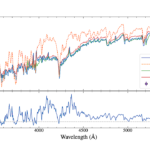
Background: Elevated lipoprotein(a) [Lp(a)] is an independent and causal risk driver for atherosclerotic
cardiovascular disease (ASCVD). Few patients with ASCVD receive Lp(a) screening and
real-world data assessing the association between elevated Lp(a) and risk of cardiovascular
(CV) events and mortality is limited. Objectives: To examine the association of elevated Lp(a) and risk of CV events and death in an
ASCVD population using large US health claims databases. Methods: Patients with ASCVD were pooled from US Medicare, commercial, and Medicaid health
plans from 2017 to 2022. Lp(a) levels were linked at the patient level from HealthVerity
Lab Data and categorized as: <30 mg/dL (<75 nmol/L), ≥30-75-<125 nmol/L), ≥50-125-<175 nmol/L), ≥70-<90 mg/dL (≥175-<225 nmol/L) and ≥90 mg/dL (≥225 nmol/L). Patients
were followed from the 1st ASCVD diagnosis (index) to insurance plan disenrollment, death, or end of study.
Cox regression, adjusted for age, sex, race, insurance, comorbidities, LDL-C, and
other risk factors, measured the association between Lp(a) levels and risk of CV events
and death. Results: Of 28.8 million ASCVD patients, 180,240 (0.6%) had Lp(a) levels: mean(±SD) age 68.6±1
years, 50.1% male, 5.9% Black, 2.8% Hispanic, 2.1% Asian, 72.8% Medicare, 21.8% commercial,
and 5.4% Medicaid. Mean follow-up was 3.7 years; 23.3% and 15.7% had Lp(a) ≥50mg/dL
[≥125 nmol/L] and ≥70 mg/dL (≥175 nmol/L), respectively. Black patients had highest
median Lp(a) (50 mg/dL/111 nmol/L), followed by Asian (13.5 mg/dL/35.5 nmol/L), White
(13 mg/dL/32 nmol/L), and Hispanic (11.5 mg/dL/29 nmol/L) patients. Lp(a) levels of
≥30-<50 mg/dL, ≥50-<70 mg/dL, ≥70-<90 mg/dL, and ≥90 mg/dL were associated with 7%,
10%, 16%, and 26% greater risks of CV events vs. <30 mg/dL (p-values <0.0001; cumulative
incidence reported in Figure 1). All-cause mortality risk was also greater for those
with Lp(a) ≥90 mg/dL vs. <30 mg/dL: hazard ratio (HR)=1.11, p=0.003. Similar trends
persisted for patients with LDL-C ≤70 mg/dL. Conclusion: In this national-scale real-world cohort of patients with ASCVD, Lp(a) testing is
infrequent and elevated Lp(a) levels were significantly associated with a greater
risk of CV events and mortality.
cardiovascular disease (ASCVD). Few patients with ASCVD receive Lp(a) screening and
real-world data assessing the association between elevated Lp(a) and risk of cardiovascular
(CV) events and mortality is limited. Objectives: To examine the association of elevated Lp(a) and risk of CV events and death in an
ASCVD population using large US health claims databases. Methods: Patients with ASCVD were pooled from US Medicare, commercial, and Medicaid health
plans from 2017 to 2022. Lp(a) levels were linked at the patient level from HealthVerity
Lab Data and categorized as: <30 mg/dL (<75 nmol/L), ≥30-75-<125 nmol/L), ≥50-125-<175 nmol/L), ≥70-<90 mg/dL (≥175-<225 nmol/L) and ≥90 mg/dL (≥225 nmol/L). Patients
were followed from the 1st ASCVD diagnosis (index) to insurance plan disenrollment, death, or end of study.
Cox regression, adjusted for age, sex, race, insurance, comorbidities, LDL-C, and
other risk factors, measured the association between Lp(a) levels and risk of CV events
and death. Results: Of 28.8 million ASCVD patients, 180,240 (0.6%) had Lp(a) levels: mean(±SD) age 68.6±1
years, 50.1% male, 5.9% Black, 2.8% Hispanic, 2.1% Asian, 72.8% Medicare, 21.8% commercial,
and 5.4% Medicaid. Mean follow-up was 3.7 years; 23.3% and 15.7% had Lp(a) ≥50mg/dL
[≥125 nmol/L] and ≥70 mg/dL (≥175 nmol/L), respectively. Black patients had highest
median Lp(a) (50 mg/dL/111 nmol/L), followed by Asian (13.5 mg/dL/35.5 nmol/L), White
(13 mg/dL/32 nmol/L), and Hispanic (11.5 mg/dL/29 nmol/L) patients. Lp(a) levels of
≥30-<50 mg/dL, ≥50-<70 mg/dL, ≥70-<90 mg/dL, and ≥90 mg/dL were associated with 7%,
10%, 16%, and 26% greater risks of CV events vs. <30 mg/dL (p-values <0.0001; cumulative
incidence reported in Figure 1). All-cause mortality risk was also greater for those
with Lp(a) ≥90 mg/dL vs. <30 mg/dL: hazard ratio (HR)=1.11, p=0.003. Similar trends
persisted for patients with LDL-C ≤70 mg/dL. Conclusion: In this national-scale real-world cohort of patients with ASCVD, Lp(a) testing is
infrequent and elevated Lp(a) levels were significantly associated with a greater
risk of CV events and mortality.


